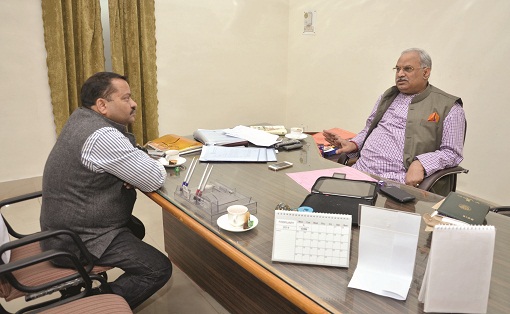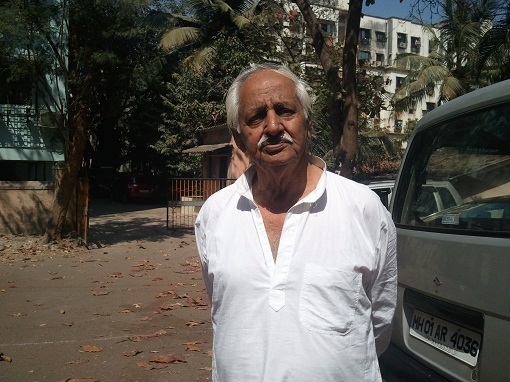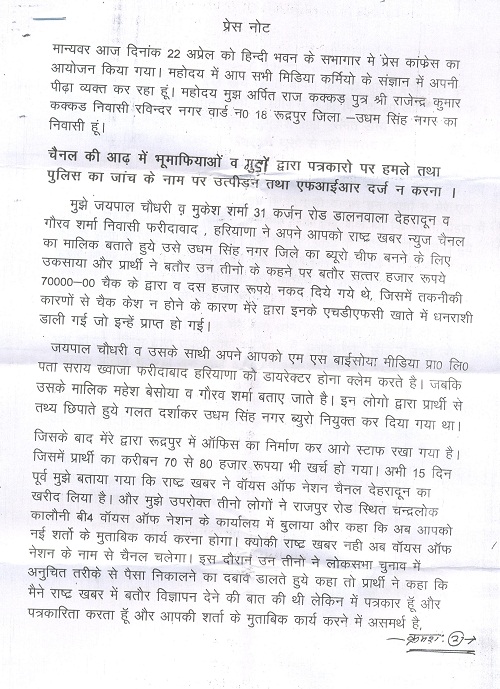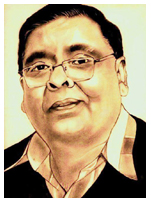Who does Narendra Modi represent and what does his rise in Indian politics signify? Given the burden he carries of the 2002 anti-Muslim massacres, it is tempting to see the Gujarat chief minister’s arrival on the national stage as a watershed moment in the escalation of communal politics. Certainly the cult-like following he has amongst the sangh parivar faithful and a wider section of the Hindu middle class is due to the image he has of a leader who knows how to “show Muslims their place”. For these supporters, his refusal to do something so simple – and tokenistic — as express regret for the killings that happened under his watch is seen not as a handicap but as further proof of his strength.
And yet, Modi’s rise and rise has less to do with his Hindutva credentials and appeal than his secular critics would like to believe. Modi is where he is today – on the cusp of power — not because the country is becoming more communal but because the Indian corporate sector is becoming more impatient. Every opinion poll that shows him inching towards power sets off a bull run on the Bombay Stock Exchange. In a recent dispatch for the Financial Times, James Crabtree noted the exceptional gains notched up by Adani Enterprises – the company’s share price has shot up by more than 45 per cent over the past month compared to the 7 per cent rise registered by the Sensex. One reason, an equities analyst told the FT, is that investors expect a government headed by Modi to allow Adani to expand his crucial Mundra port despite the environmental complications involved. “So the market is saying that, beyond the simple proximity of Mr Adani and Mr Modi, these clearances may no longer be so hard to get under a BJP regime,” the analyst is quoted as saying.
The word ‘clearances’ sounds benign but what it really signifies is Modi’s willingness to accommodate the desire of capital to expand in any way it wants – horizontally, across land and field, vertically, above and below the earth, and laterally, in terms of accommodating the demands of foreign investors, including for the opening up of the insurance and retail sectors. And if environmental rules, livelihoods, farmsteads or community interests intervene, they must perforce make way with the vigorous backing and assistance of the government. It is this promise of ‘decisiveness’ that has made Modi such an attractive proposition for Indian – and global — big business today.
How and why the country’s top businessmen switched allegiance from the ‘indecisive’ Congress to Narendra Modi is a story that reflects the inner rhythms of life at the base of Indian politics. But it is also a cautionary tale about the deep crisis that rent-seeking and cronyism have engendered in the Indian economy now that the immediate gains made possible from liberalization have reached their natural limit. For all the changes that neo-liberal policies and the end of the ‘license-permit raj’ were meant to usher in, the level of rent that can be earned by companies that are close to the government has reached astronomical levels. As N.S. Siddharthan of the Madras School of Economics argues, “Under the existing business environment, the path to amass wealth is not through manufacturing but through exploitation of resources under government ownership.” Even if some of the estimates generated by the Comptroller and Auditor General in his reports on the 2G spectrum and coal scans appear to be on the high side, it is evident that the preferential allotment of resources has become a huge source of profit for companies that might otherwise earn only a ‘normal’ rate of return through their brick-and-mortar ventures. These resources include not just coal or spectrum or iron ore but, most crucially, land and water too. And here, the poster boy for the brave new world that Modi represents is Gautam Adani, whose emergence as a major businessman closely mirrors the rise of the Gujarat Chief Minister himself.
At the January 2009 ‘Vibrant Gujarat’ summit, two of India’s biggest industrialists, Anil Ambani, who was locked in battle with Mukesh Ambani over the issue of gas pricing, and Sunil Mittal, chose openly to bat for Modi as Prime Minister. “Narendrabhai has done good for Gujarat and [imagine] what will happen if he leads the nation,” Anil Ambani was quoted as saying. “Gujarat has seen progress in all the fields under his leadership. Now, imagine what will happen to the country if he gets the opportunity to lead it … Person like him should be the next leader of the country.” Mittal, head of the Bharti Group with major interests in telecoms, had this to say: “Chief Minister Modi is known as a CEO, but he is actually not a CEO, because he is not running a company or a sector. He is running a state and can also run the nation.” Tata, who was present at the event, also sang Modi’s praises. “I have to say that today there is no state like Gujarat. Under Mr Modi’s leadership, Gujarat is head and shoulders above any state.” Again, the question of ‘clearances’ took pride of place. The Economic Times reported: “A state, Mr Tata gushed, would normally take 90 to 180 days to clear a new plant but, ‘in the Nano case, we had our land and approval in just two days.’”
Two years later, at the 2011 Vibrant Gujarat meet, the prize for florid rhetoric went to Mukesh Ambani: “Gujarat is shining like a lamp of gold and the credit goes to the visionary, effective and passionate leadership provided by Narendra Modi. We have a leader here with vision and determination to translate this vision into reality.” In 2013, it was again the turn of his estranged brother. “Anil Ambani hailed chief minister Narendra Modi as the King among Kings,” the Economic Times reported, and requested the audience to give the CM a standing ovation. “The audience readily relented.” Others who spoke included a who’s who of top industrialists. If there was no repeat of the ‘Modi for PM’ chant this time around, it was only because India Inc had already made its choice clear.
Looking back, a major turning point in this evolving matrix of business and political interests was surely the Niira Radia tapes drama of 2010. Coming close on the heels of the CAG’s dramatic exposé of the 2G scam, the Radia tapes brought out into the open the inner connections between big business, politicians, policymaking and even the media. With the Supreme Court now joining the CAG in seeking to stop the loot of public resources, it became clear that the era of easy “clearances” was now coming to an end. It was around this time that corporate India started accusing the Congress-led Manmohan Singh government – which they had strongly backed, and profited from, until then — of “policy paralysis”, “drift” and “indecisiveness.”
Since his name had figured in the Radia tapes, it was only natural that Ratan Tata should lead the charge. Warning that India was in danger of becoming a ‘banana republic’, the head of one of the country’s largest conglomerates hit out at the government for failing to maintain a conducive climate for industry. He was soon joined by Deepak Parekh, the influential head of HDFC bank, who raised the spectre of capital flight since land acquisition and mining leases were becoming more difficult. “Talk to businessman after businessman”, the Times of India reported, “and one of the first things he’ll tell you, off the record, is, ‘The government’s come to a halt. Bureaucrats, bankers, everybody’s scared to take decisions.’ The next thing he’ll tell you: ‘We are now looking at investing abroad rather than in India’.” Sharad Pawar, the business-friendly Union Agriculture Minister, also lent his voice to this chorus of protest.
It is a fact that outward investment from India has been growing steadily, except for a fall in the slump year of 2009-10. Companies invest abroad for a wide variety of reasons. Some look for resources like coal or oil to feed their industries at home, others for technology or a means of more easily accessing protected markets. Domestic constraints on profitability can also be a factor. As Harun R. Khan, Deputy Governor of the Reserve Bank of India has noted, “There exists a school of thought which apprehends that overseas investment by Indian corporates is at the cost of on-shore investment. One of the discernible reasons acting as an obstacle for companies to undertake on-shore investment could be the policy and procedural constraints.” But domestic investment is also constrained by supply bottlenecks, especially in infrastructure, and domestic demand, which, in turn, are functions of public investment and expenditure, investor confidence, and the poor dispersion of income, which affects the spending power of the population.
As long as the Indian economy was maintaining a high rate of growth during the first term of the Manmohan Singh government, the biggest Indian companies were able to enjoy both “normal” profitability and a “crony premium.” But the joint effect of the 2008 global slowdown on inflation, and interest rates, and the blow that Radiagate, the CAG, public opinion, and a more vigilant judiciary have delivered from 2009 onwards has fatally compromised this cosy revenue model. The arraignment of the Sahara group by the Securities and Exchange Board of India and the jailing of its boss, Subrata Roy, by the Supreme Court on contempt charges is perhaps the most dramatic example of how the terrain for big business is changing. To be sure, Manmohan Singh and Finance Minister P. Chidambaram were aware of the brewing disquiet in the corporate sectorand tried to tackle the problem at the easier end by creating the Cabinet Committee on Investment and making rent-friendly changes in key ministries like Petroleum and Natural Gas and Environment and Forests. But this has not been enough to restore the confidence of India Inc in the Congress party’s ability to restore the status quo ante.
It is hardly surprising that this is the time the name of Narendra Modi as a potential Prime Minister of India enters public discourse in a determined fashion. Egged on by corporate sponsors as well as by the personal preferences of their proprietors, big media swung into action to take the process of “normalizing” Modi to its logical conclusion. Barely nine years earlier, the Gujarat Chief Minister and the massacres he failed to prevent were universally acknowledged by the media as having played a key role in the defeat of the National Democratic Alliance government at the Centre in 2004. The problem was how to convince the same urban middle class India, which is repelled by the spectre of communal violence, that the solution to India’s problems lies in Modi’s leadership. This is how the myth of the ‘Gujarat model of development’ came in handy. “Today people are talking about the China model of development in Gujarat,” Anand Mahindra of Mahindra and Mahindra told the 2013 Vibrant Gujarat summit. “But the day is not far when people will talk about Gujarat model of growth in China.”
Enough has been said and written about the statistical legerdemain that underlies Modi’s fanciful claims as an administrator who has transformed Gujarat. But in praising their Leader in this way, Corporate India is making an inadvertent admission: that what they admire the most about Modi is his love for the “Chinese model.” What is this model? It is one in which “clearances” for land, mines and the environment don’t matter. It is one in which awkward questions about gas pricing are never asked, let alone answered. Unlike the growing public support for strong institutional action against corruption that lies at the root of the visible disenchantment with the Congress, Corporate India is not interested in an end to “corruption” as such. Cronyism and rent-seeking have become an integral part of the way our biggest companies do business – a sort of ‘capitalism with Indian characteristics’ – and they are looking to Modi to run this system in a decisive, stable and predictable manner. What they want is a Leader who will manage contradictions and institutional obstacles as and when they emerge. The communalism of the hordes who follow the Modi cult is an added attraction for his corporate backers, provided the Leader is able to keep his flock in check. This is something Atal Bihari Vajpayee and even L.K. Advani were not always capable of doing. Narendra Modi is a more decisive and strong-willed man. He can be counted upon to keenly calibrate their deployment whenever a crisis requires a diversion.
Postscript: As this issue was going to press came news that N.K. Singh, the bureaucrat-turned-politician, who is heard on the Radia tapes trying to influence the course of a parliamentary debate on a matter concerning Reliance, has joined the Bharatiya Janata Party.
Siddharth Varadarajan, formerly Editor of The Hindu, is a Senior Fellow at the Centre for Public Affairs and Critical Theory, New Delhi
साभार- एसवरदराजन डाट काम





